Mastering the Art of Web and Mobile App Push Notifications with Retainly
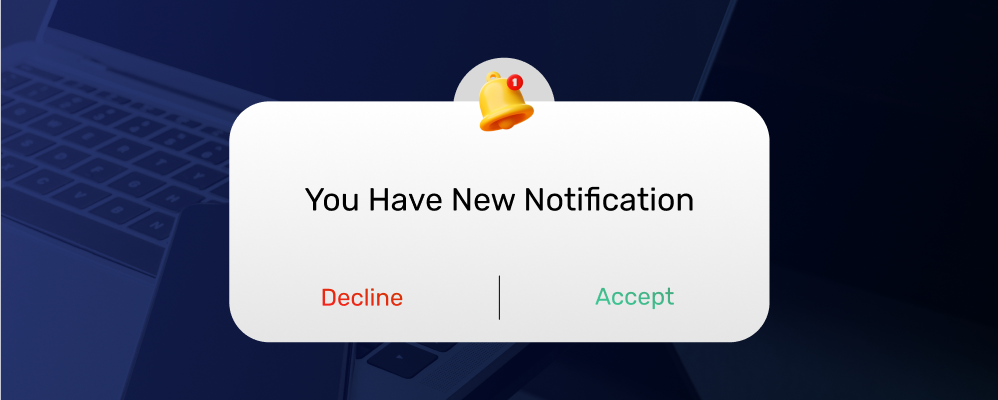
Marketers mix web and mobile app push notifications with their traditional email and SMS tools to reach different audiences. You can also use them to improve brand visibility, announce major changes, and increase conversion. But that’s only going to work if you build your push strategy around three key aspects: timing, relevance, and frequency. And if you don’t burn out from the work it takes to get it right. 😅
This is where tools like Retainly step in and help you streamline your push notification routine.
Let’s see how to set up and manage the push notifications so customers allow them.
Mobile and web push notifications: What they are and how they differ
Web push notifications (or simply web-push) are the notifications sent by a website through supported operating systems (MacOS, Windows, etc.) and browsers (Safari, Chrome, Firefox, and others). They can appear on desktop or mobile devices in different areas of the screen.
Mobile app push notifications are generated by app developers and typically pop up on mobile devices. Unlike web push notifications that usually contain marketing offers and progress updates, mobile app pushes also notify about app updates, changes to their Terms and Conditions (T&C), civic information, and so on.
In both cases, the user must first allow the website or app developers to send them notifications (opt in). Usually, they grant permission by agreeing to a T&C and/or Privacy Policy. They can also exclude themselves (opt-out) from your to-send list, which means you should be careful about your message content and frequency.
Whether you offer your products through a mobile app, website, or both, push notifications can enhance your marketing strategy. Let’s see how.
The advantages of web and mobile app push notifications
Marketers use push notifications to build short, consistent communication with the brand’s customers. But that’s not the only reason to use them. Here are a few more.
Real-time communication and updates
Web and mobile push notifications advertising gives marketers a superpower of instant one-way communication about the company’s deals and news. This is particularly useful for managing short-term campaigns.
Automation
Push notifications services are automation-friendly, so you can send messages to different target audiences and market geographic segments at the right time.
Improved retention
According to the Airship Benchmark Report on push notification impact, daily mobile app pushes increase the app retention rate by 820%, weekly pushes increase the retention rate by 440%, and sending just one push contributes to 120% higher app retention rates, compared to app users who received none.
Increased conversion
Push notifications on iOS, other operating systems, or browsers invite users to take action (subscribe, purchase, opt in for newsletters, update the app). When the message and your brand resonate with them, they are more likely to convert into subscribers, readers, and customers.
Better leads
People opt in to web notifications to satisfy their interest or need to keep up with your brand’s news. And that’s the audience you should pay extra attention to, as they may be easier — and cheaper! — to convert than those who hit the Deny button.
Personalization for a better user experience (UX)
Web and mobile app push setups usually allow for writing different messages for each TA segment and sending them at a specific time. Doing so will result in a personalized approach toward each group of your visitors/users, which is expected by at least 71% of customers.
So why not use push notifications if they bring such benefits? Here are a few use cases for each push notification type that will yield the best results.
When should you use mobile app and web push notifications?
The short answer is: whenever you launch a website, web app, or mobile app. Setting them up right away will improve your ability to streamline communication and assess audience interaction from day one. But here are a few specific cases where you want to put each push type to work.
App pushes use cases
App pushes work great for reminding clients about you and your brand without overwhelming them with tons of information. Use app pushes in the following cases:
Remember that your message shouldn’t always require action but should always have value for the client and help create an image as a company that cares about its customers.
Web pushes use cases
After the user grants your website or web app permission to send web pushes, you should assess what information you want to share with them and how often. Remember that web pushes work mostly on desktop devices, so you should be considerate about the timing and content you send to avoid excessive interruption. Here are a few appropriate cases.
We’re sure many of these cases also apply to your business. The good news is that there are solutions to help you manage your push notification strategies easily. Let’s see how Retainly can be your best bet here.
The Retainly guide to web and mobile app pushes
Retainly’s web and mobile app push features allow you to automate and manage notification-related activities, such as text drafting and scheduled sending. And that’s what you want: to do the job fast with minimum investment and streamline your notification workflow. Let’s see what you can achieve if you make Retainly your trusted tool.
What Retainly clients achieve with web and mobile app push notifications
Clients who create and follow web and mobile push notification strategies will see beneficial results for their business. Here are a few of the most common ones.
Setting up web pushes in Retainly
Follow these steps to successfully set up web pushes in Retainly for different browsers and OSs.
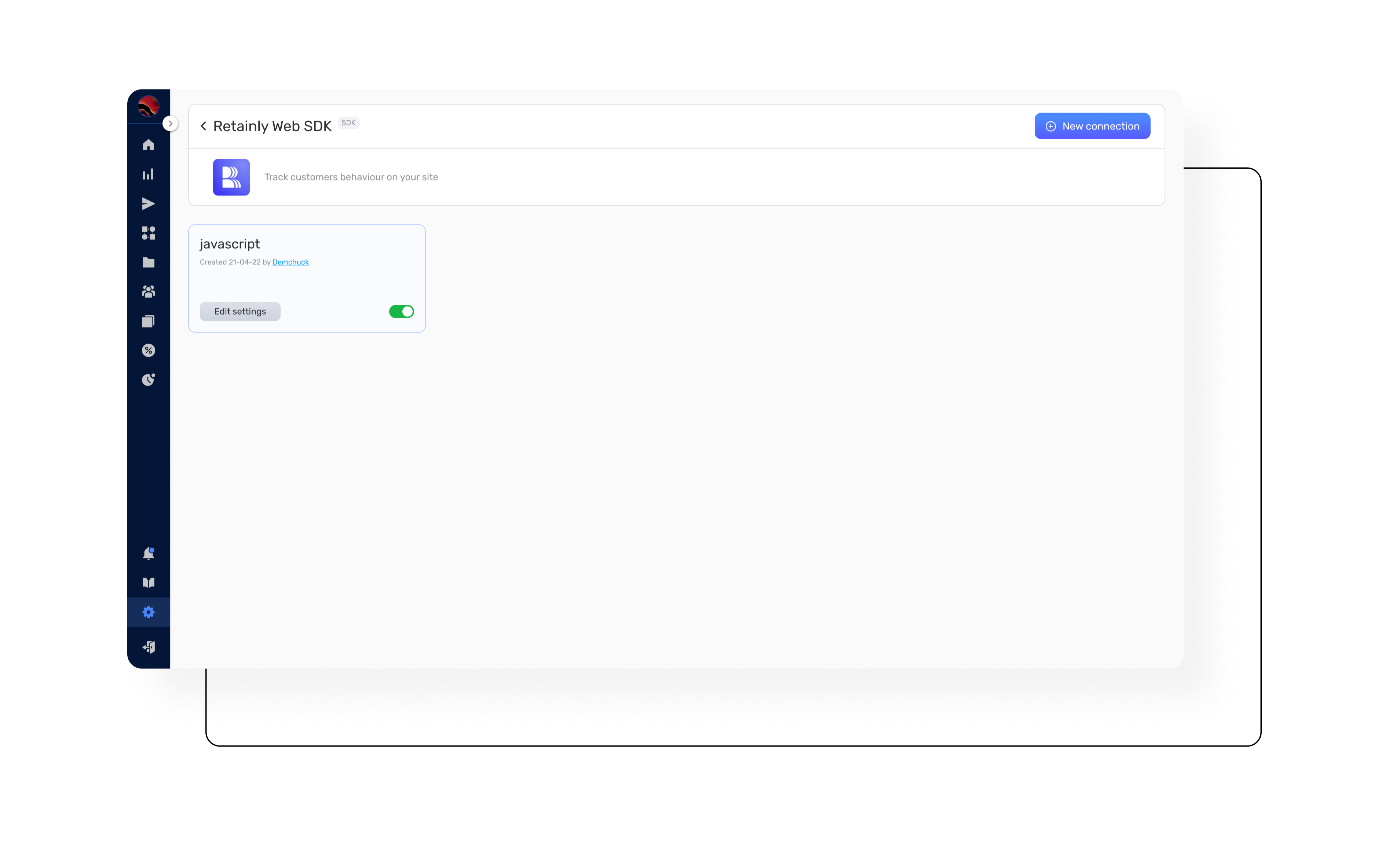
A. Configure Retainly SDK and integrate web pushes.
To do so, go to Integrations > SDK and follow the configuration instructions.
After the SDK is configured, start the web push integration process. For this:
- Go to Integrations in your Retainly dashboard.
- Select Web pushes.
Choose Retainly web pushes and follow the setup instructions.
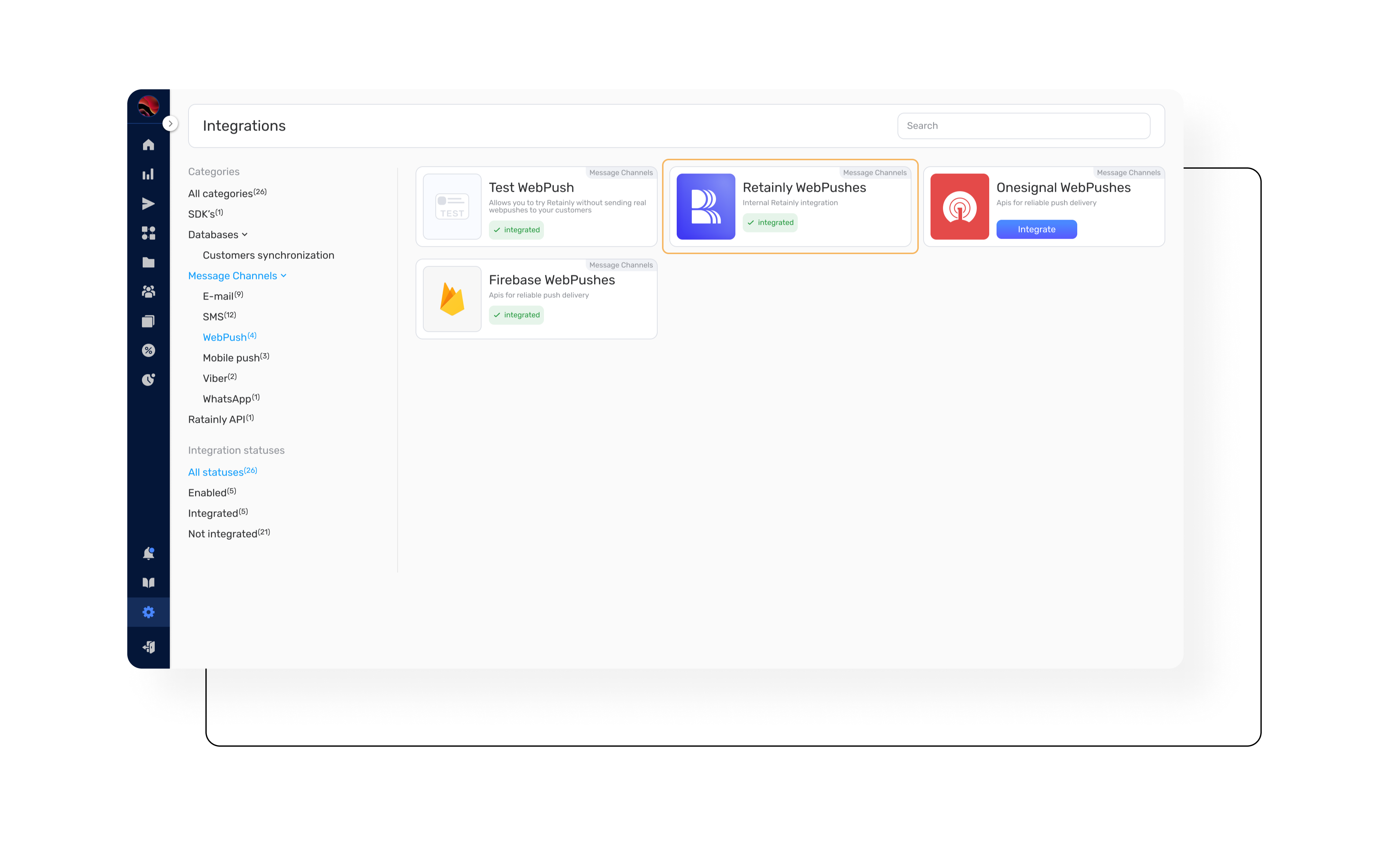
You can also set up your website on OneSignal or Google Firebase and use their APIs to integrate their web-push services.
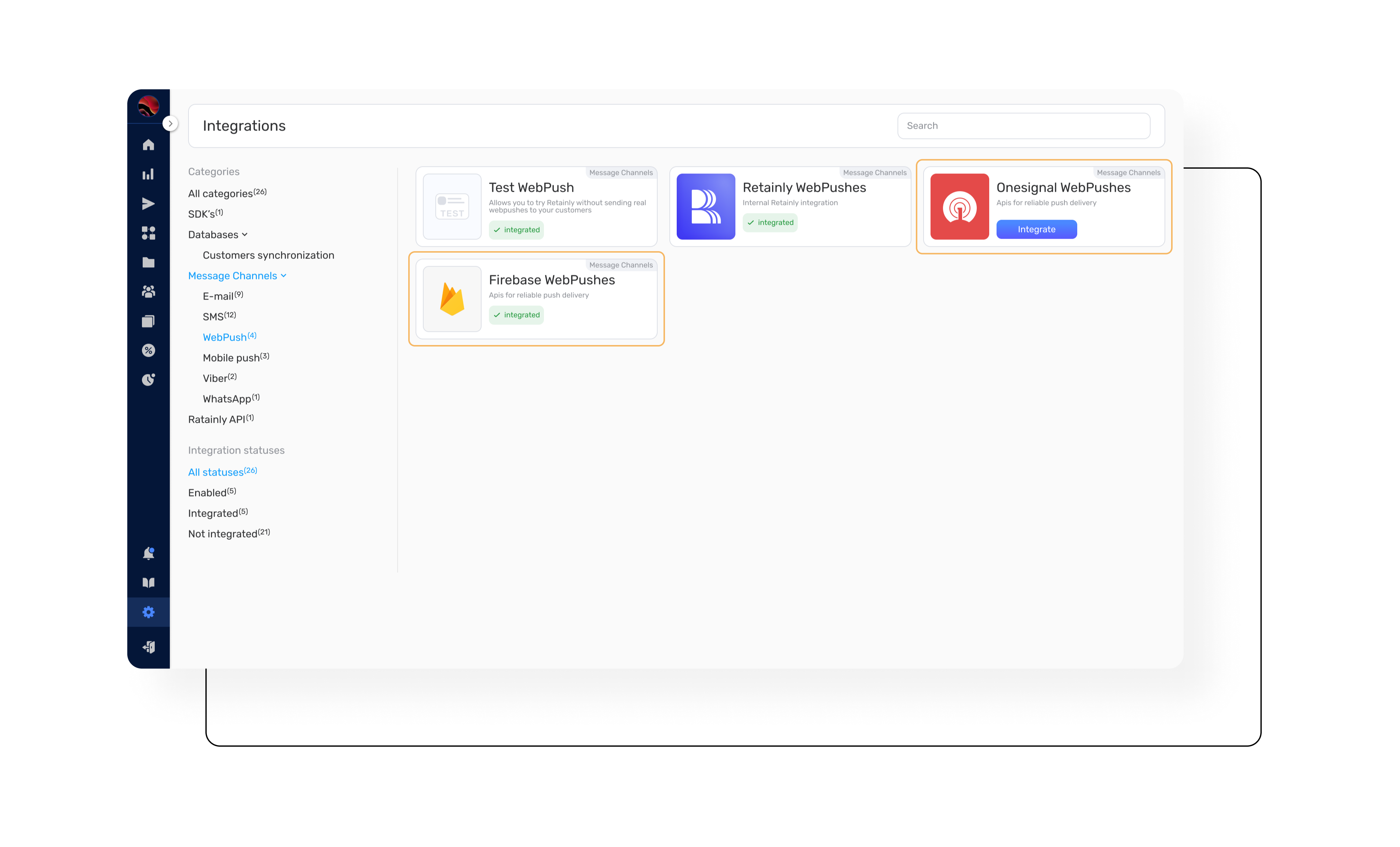
B. Create a web-push template.
You will use this web-push template to send notifications to your customers. The template should include the following elements:
- Title
- Message
- Icon
- URL
Think about template customization and align it with your brand. Also, ensure it communicates the intended message to your customers effectively.
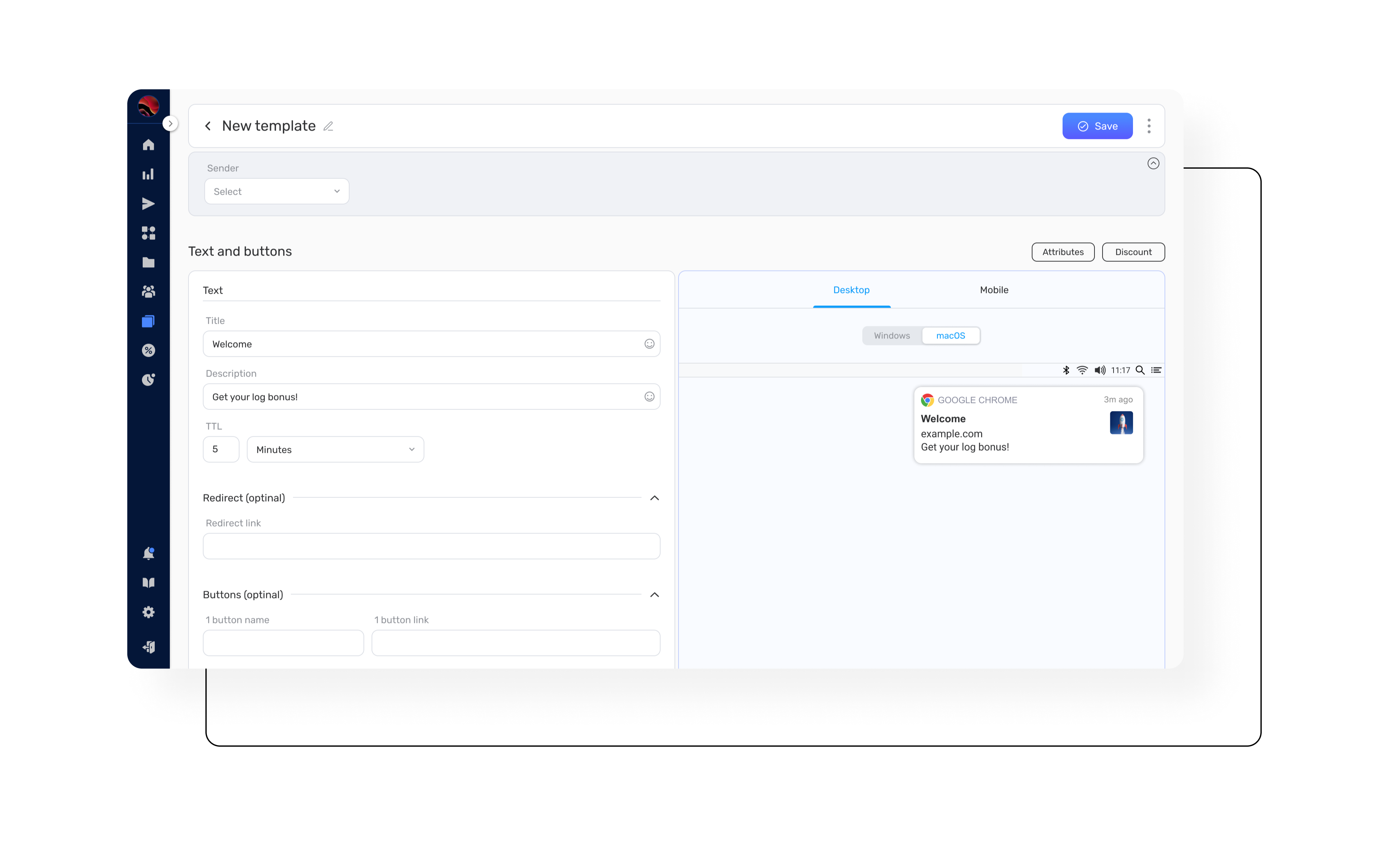
C. Set up a workflow with a web-push node.
To send notifications to your customers, you should create a workflow using a web-push node. Here’s how to do it:
- In your Retainly dashboard, go to the Workflows section.
- Click on Create Workflow and name it based on the type of notification it should send (Updates, News, etc.).
- Add a trigger for your workflow, e.g., a user signing up for your newsletter or making a purchase.
- Add a web-push node to your workflow, and connect it to the trigger.
- Configure the web-push node by selecting the web-push template you created earlier. You can also set different options, such as scheduling messages or targeting specific audience segments.
- Save your workflow.
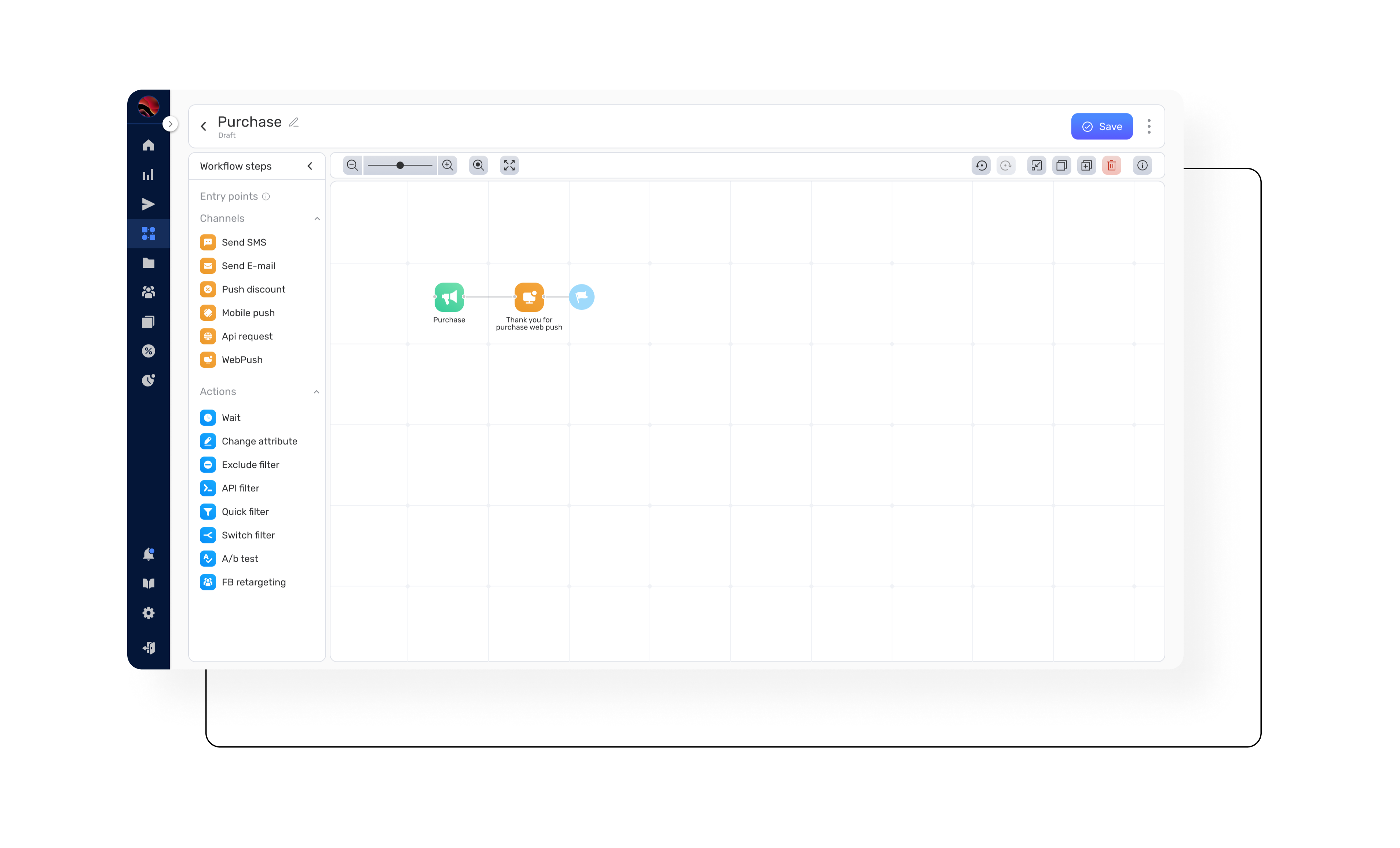
The configured workflow will automatically send notifications to your customers based on the defined trigger, audience, and schedule. This will help you engage with them and drive more traffic to your website.
With these steps completed, your web push notifications are now in Retainly. Test web push notifications on Chrome and other browsers to see how they perform on different devices.
Use cases and workflows that Retainly web pushes serve best
Chrome, Firefox, or Safari web push notifications can be used to sell or recommend products or remind users about unfinished activities. Let’s discuss that in detail.
Abandoned cart reminders
Customers may add products to their cart but forget or postpone placing orders. With Retainly, you can create a web push notification workflow to remind them about their abandoned cart after an hour or a day since the last interaction.
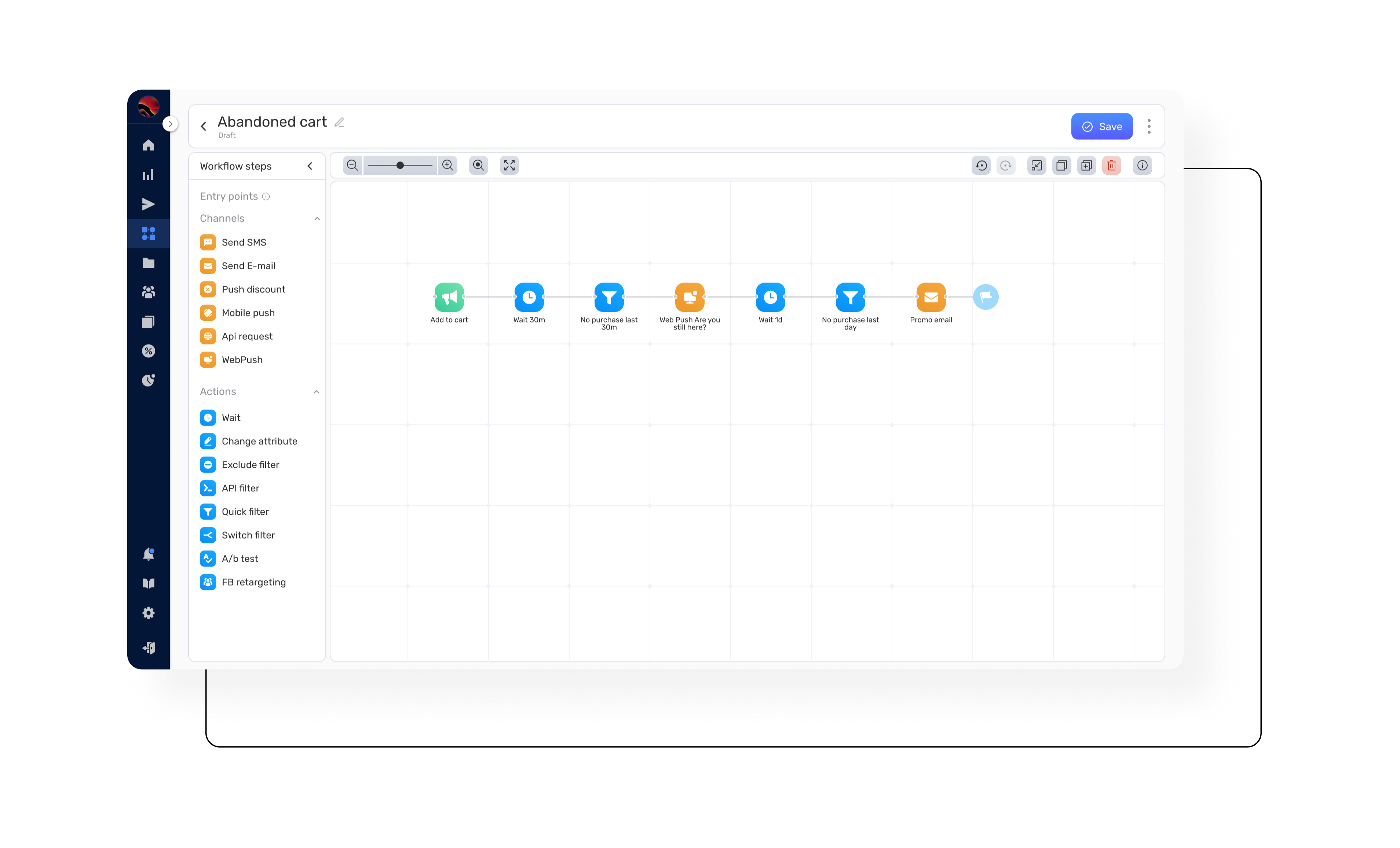
You can set up the message’s information, such as the items in the cart, and a CTA message to complete the purchase. Optionally, you can also give them a small discount to encourage order finalization.
Promotional offers and discounts
Limited-time offers, exclusive deals, and seasonal discounts can be delivered through web pushes workflow.
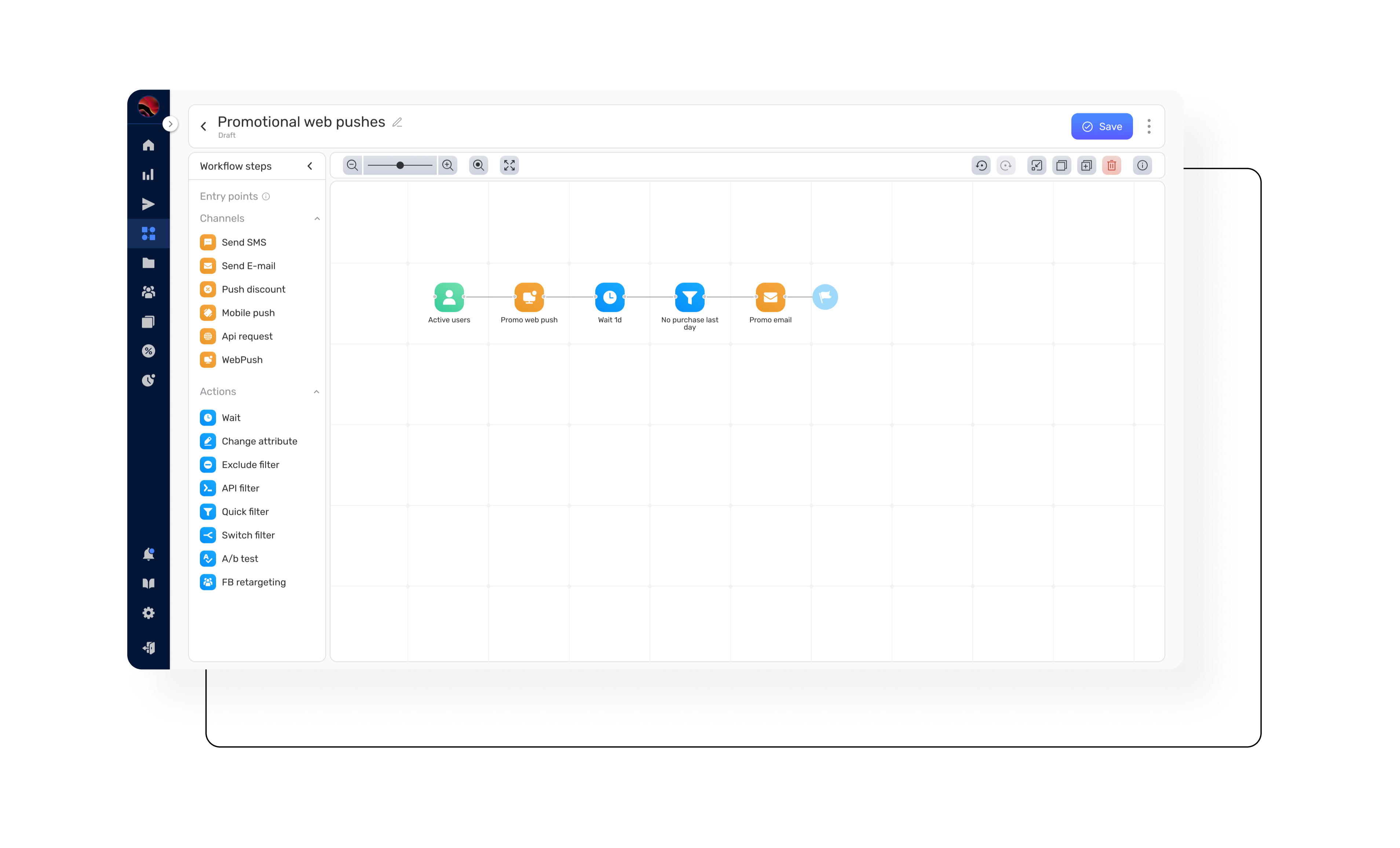
You can set up a promo workflow that activates automatically every time you launch a promo campaign. This way, you may increase your website’s traffic and sales. Such web pushes should have an engaging title, offer description, and a CTA. Also, make sure it will lead the users to the relevant page.
Personalized product recommendations
If you have user data on previous purchases or interactions with your company, don’t hesitate to use it to tailor your recommendations.
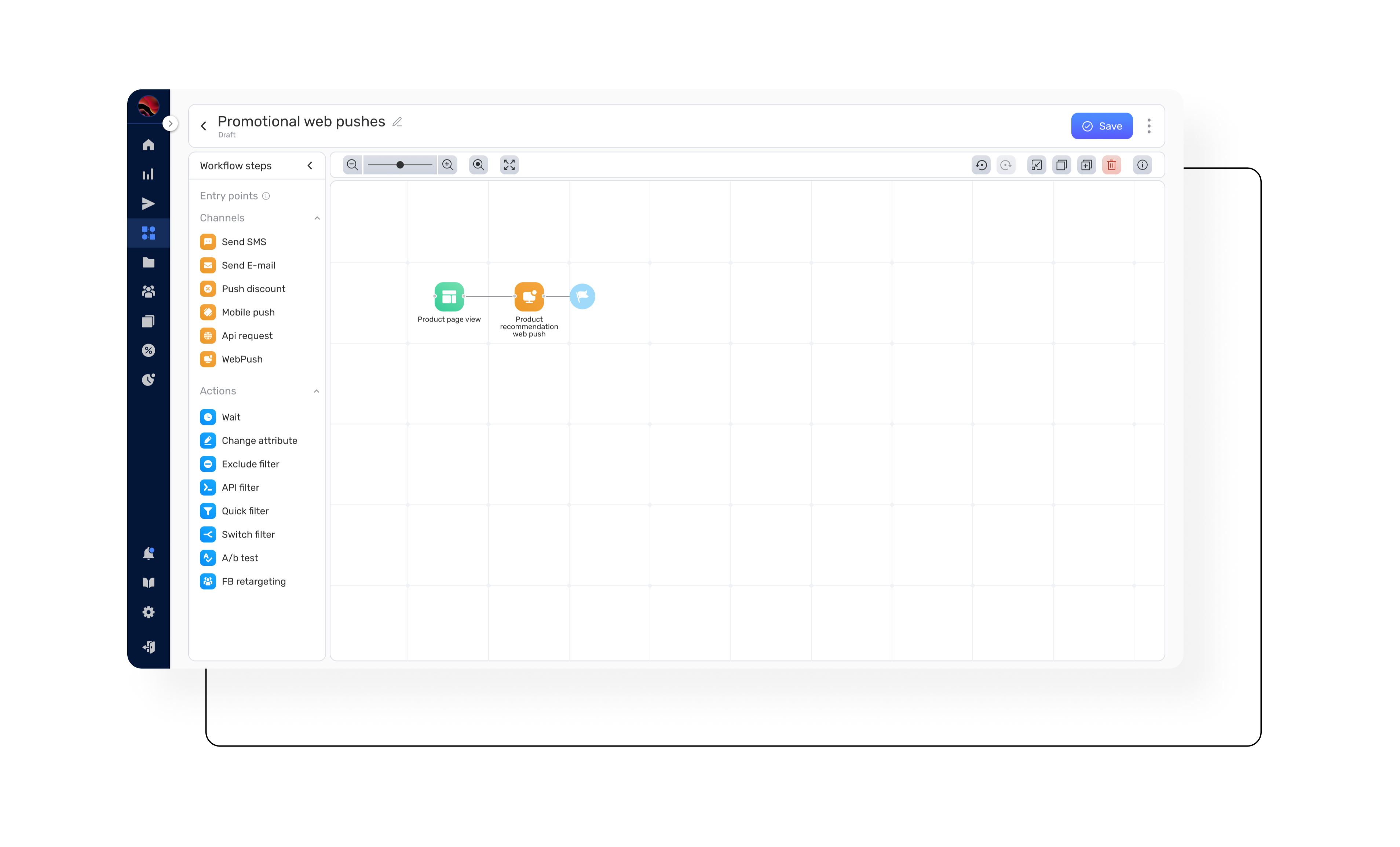
Personalization workflow helps you send customized web push notifications to the TAs that are already interested in specific products or categories.
What should your notification include?
- An engaging title
- A brief description of the recommended product
- A CTA that directs users to the product page
This strategy can help improve user experience, increase conversion rates, and foster customer loyalty.
That’s how you start a web push campaign with Retainly. Now, let’s see how to set up the mobile app pushes to cover more customers.
Setting up mobile app pushes in Retainly
Mobile pushes are great for quick communication with mobile device users, even if they aren’t active on your app. Here’s how to set up Retainly mobile push features and be seen by more customers.
A. Integrate OneSignal or Firebase.
First, you must choose OneSignal or Google Firebase as your mobile push provider.
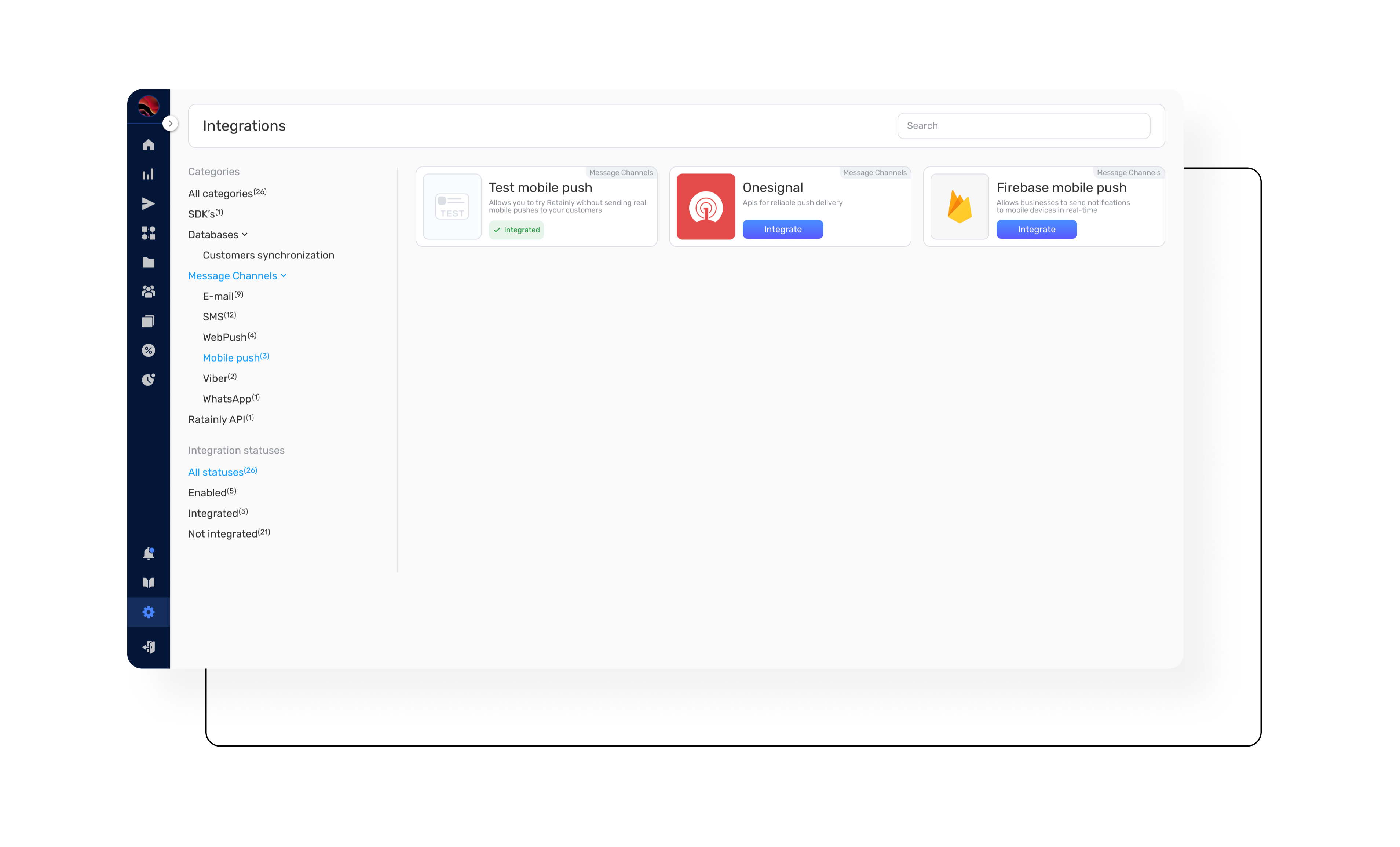
Then, set up your app on the selected platform and follow their integration instructions.
To integrate the selected platform with Retainly through their respective APIs in the integration settings:
- Go to Integrations.
- Select Mobile Pushes.
- Choose either OneSignal or Firebase, depending on your chosen provider.
- Follow the setup instructions to integrate the selected platform with Retainly.
After your setup is completed, create an app push template.
B. Create a mobile push template.
You’ll use this template for sending notifications to your customers. To make it effective, make sure it has the following elements:
- Title
- Message
- Additional content (images or action buttons)
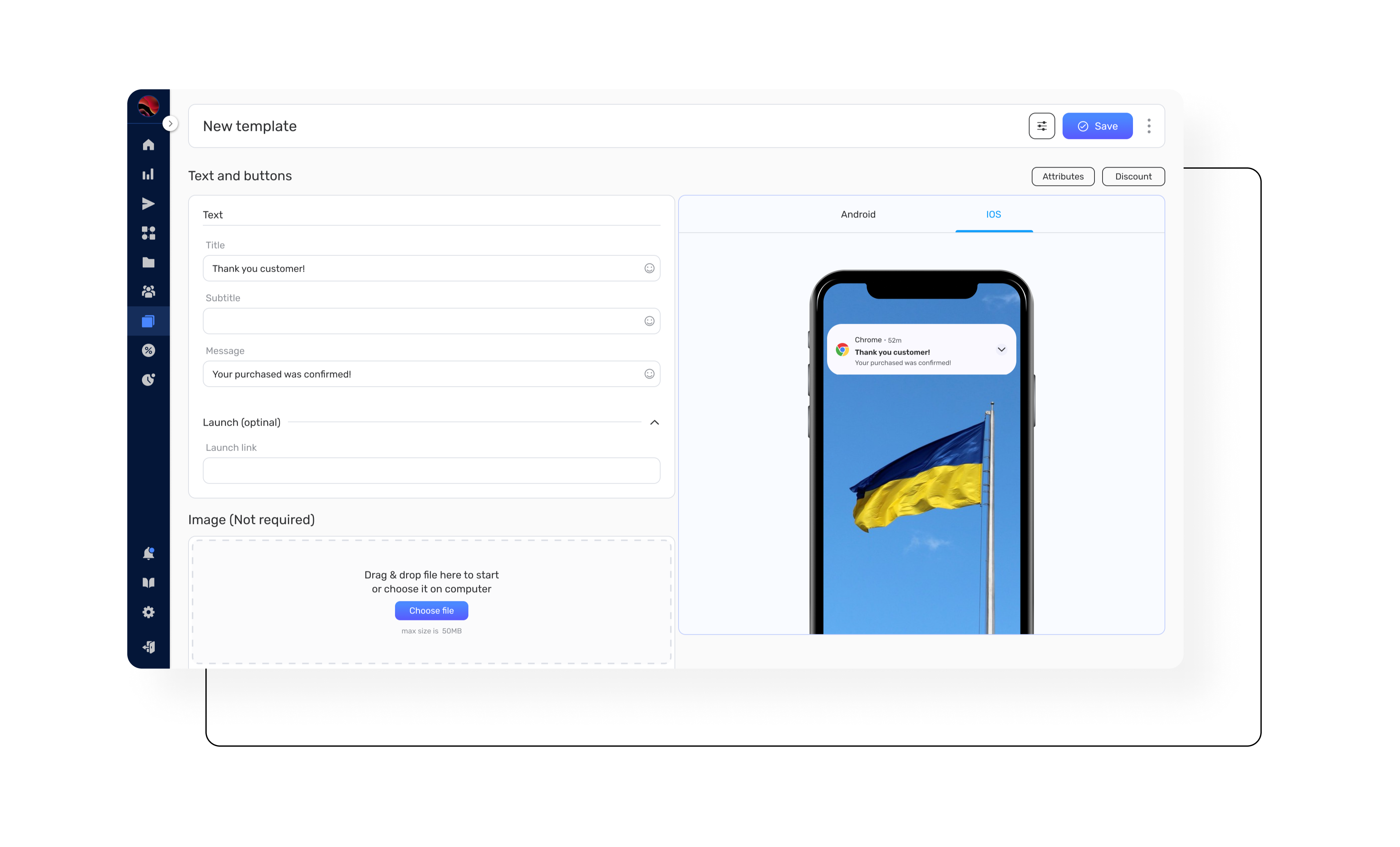
As with web pushes, you can customize the template and bring forth your branding elements.
C. Set up a workflow with a mobile push node.
The final step is to create a workflow that uses the mobile push node to send notifications to your customers. Here’s how to do it.
- Go to the Workflows section.
- Click on Create Workflow and name it based on the intended message (Updates, Promo).
- Add a trigger for your workflow (user signing up for your newsletter, purchasing, or a specific in-app event).
- Add a mobile push node to your workflow and connect it to the trigger.
- Select the mobile push template you created earlier to configure the mobile push node.
- Set other necessary options (schedule notification or target specific audience segments).
- Save your workflow.
And that’s how your mobile push notifications are set up in Retainly using either OneSignal or Firebase. The configured workflow will automatically send notifications to your customers based on the defined trigger, helping you engage with them and drive more user interactions with your app. Let’s now look at where you should apply app pushes.
Use cases and workflows that Retainly mobile app pushes serve best
Mobile app pushes are great for keeping in touch with people that are always on the go. Here are a few cases to use them in.
Onboarding and app feature highlights
Help your users set up and discover your app’s features from day one. With mobile push notifications, you can guide new users through the onboarding process and highlight key features of your app so they can use it more effectively.
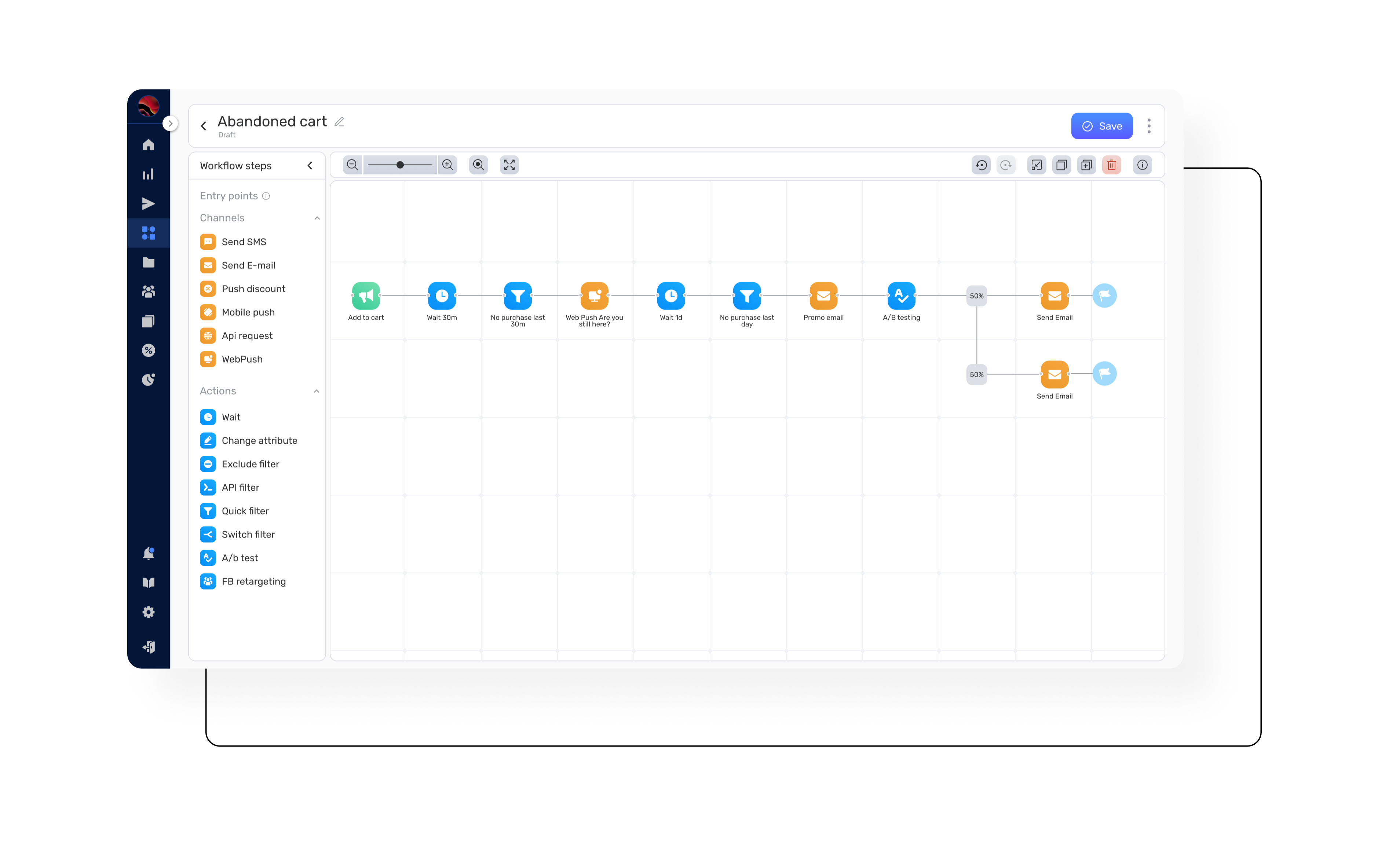
Additionally, you may create a series of notifications that introduce users to different aspects of your app and help them see the value of your product. How can you do this? Prepare some tips and resources to ensure a smooth onboarding experience. This way, you’ll improve user retention and overall satisfaction with your app.
App updates and new feature announcements
You’re going to improve your app and add more features based on user perception and feedback. The key thing here is to make these updates loud and clear, and mobile app pushes are your trusted tool for this job.
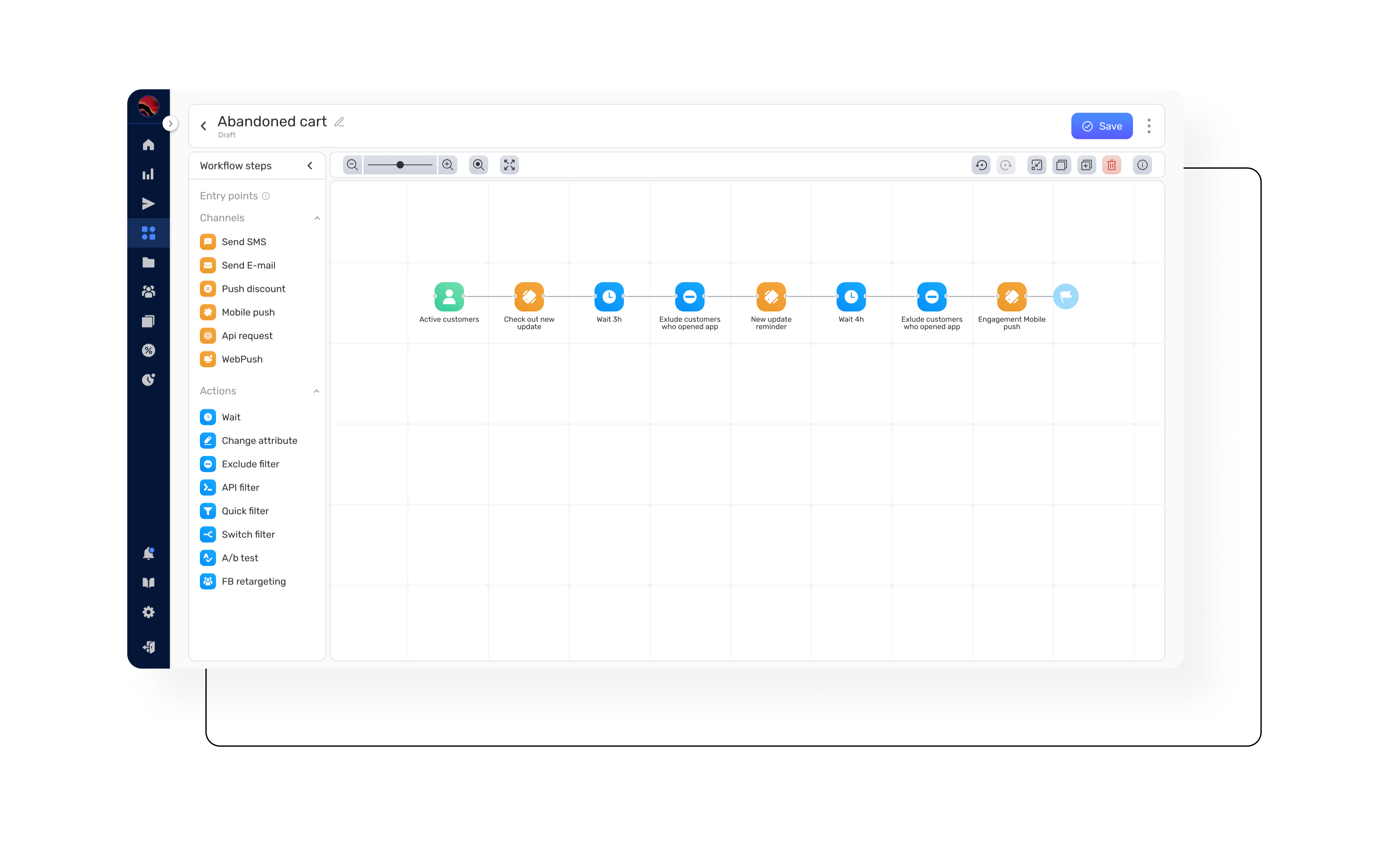
Notify your users of your app’s latest updates, improvements, or new features, and encourage them to explore. You may also ask them to provide feedback and collect valuable insights from your most important target audience to improve their UX and your retention rates further.
Wrapping up
Web and mobile app push notifications help create customized and instant messages to communicate with clients and leads. These tools will improve user engagement and lead to more revenue. Moreover, they can help you increase brand awareness and customer loyalty.
With Retainly, you can set up and automate push notification delivery for web pages and apps. The best part? You can send them to your segmented TA at specific times and tailor the messages so your communication is always timely and relevant. Check out our push notification features and contact our team to learn how to leverage them in your content marketing strategy!
Mobile and web push FAQ
Mobile and web push notifications are real-time messages sent to users’ mobile devices and web browsers to provide them with relevant content, updates, or offers.
To enable web push notifications, integrate Retainly’s SDK with your website or use web-push service providers (OneSignal or Google Firebase) and their API service to integrate your Retainly account. To enable mobile pushes, you must integrate your Retainly account with OneSignal or Google Firebase and use their services to send them.
Yes. Retainly’s platform allows you to customize the look of your push notifications to ensure they align with your brand identity. You can customize such elements as the title, message, icon, and call-to-action buttons.
Retainly’s platform can segment your audience based on user behavior, preferences, and demographics. Sending them audience-specific messages helps you create personalized messages that resonate with each user segment and improve engagement.
Retainly’s platform has comprehensive analytic tools that measure delivery rates, open rates, click-through rates, and conversions. They help you assess the effectiveness of your push notification campaigns, test hypotheses, and optimize the look and messages for better results.
Retainly follows GDPR compliance policies. Users must agree to receive push notifications from you, and you can manage their preferences within the platform to respect their privacy rights.
No. You can send push notifications to those users who agreed to receive them by installing your app or accepting the T&Cs on your website.
If the notification is sent to the user’s temporarily offline device, it will be delivered once the connection is back, provided the notification has not expired.